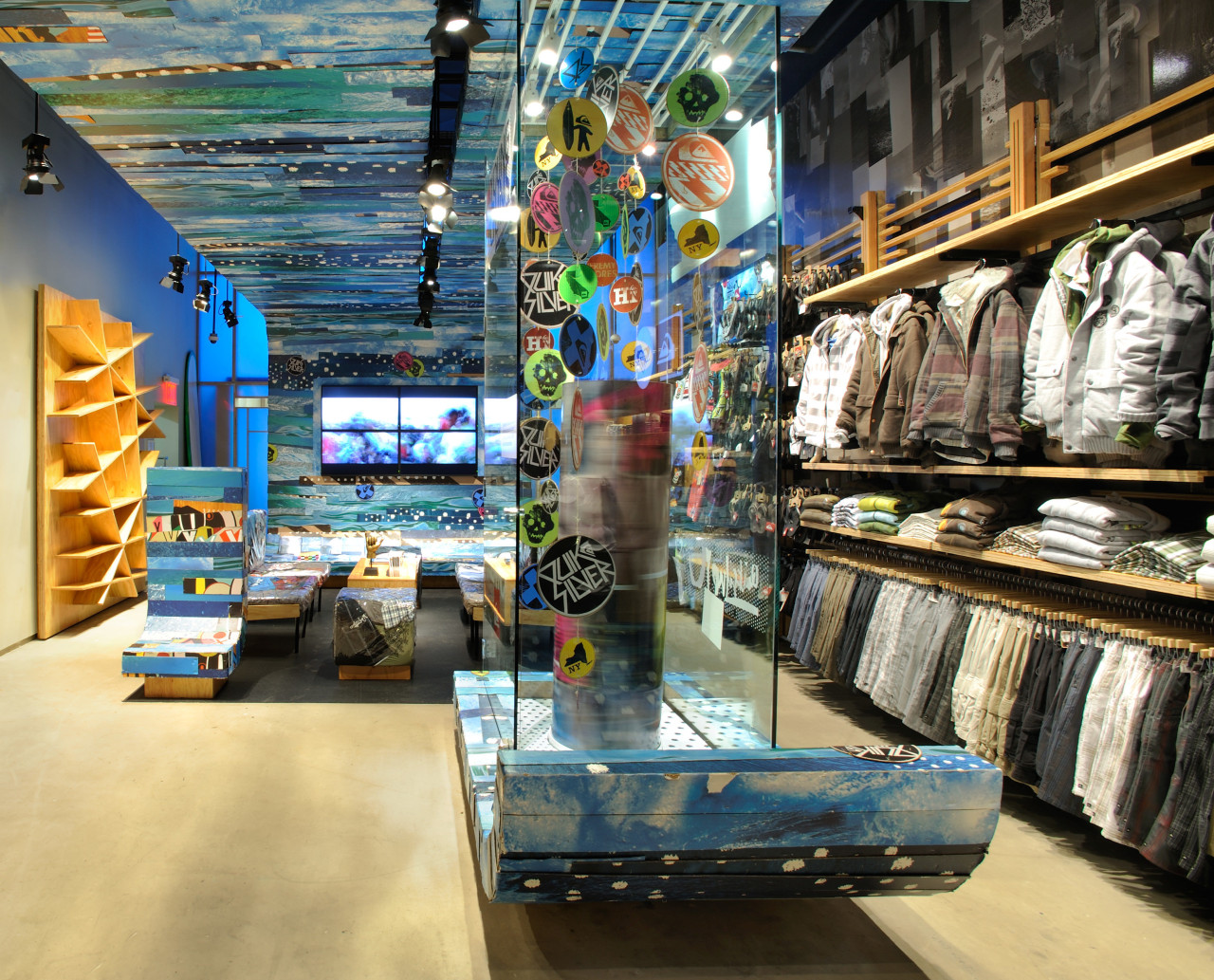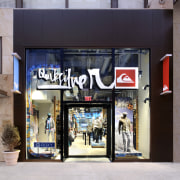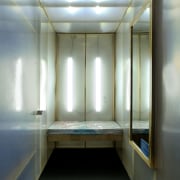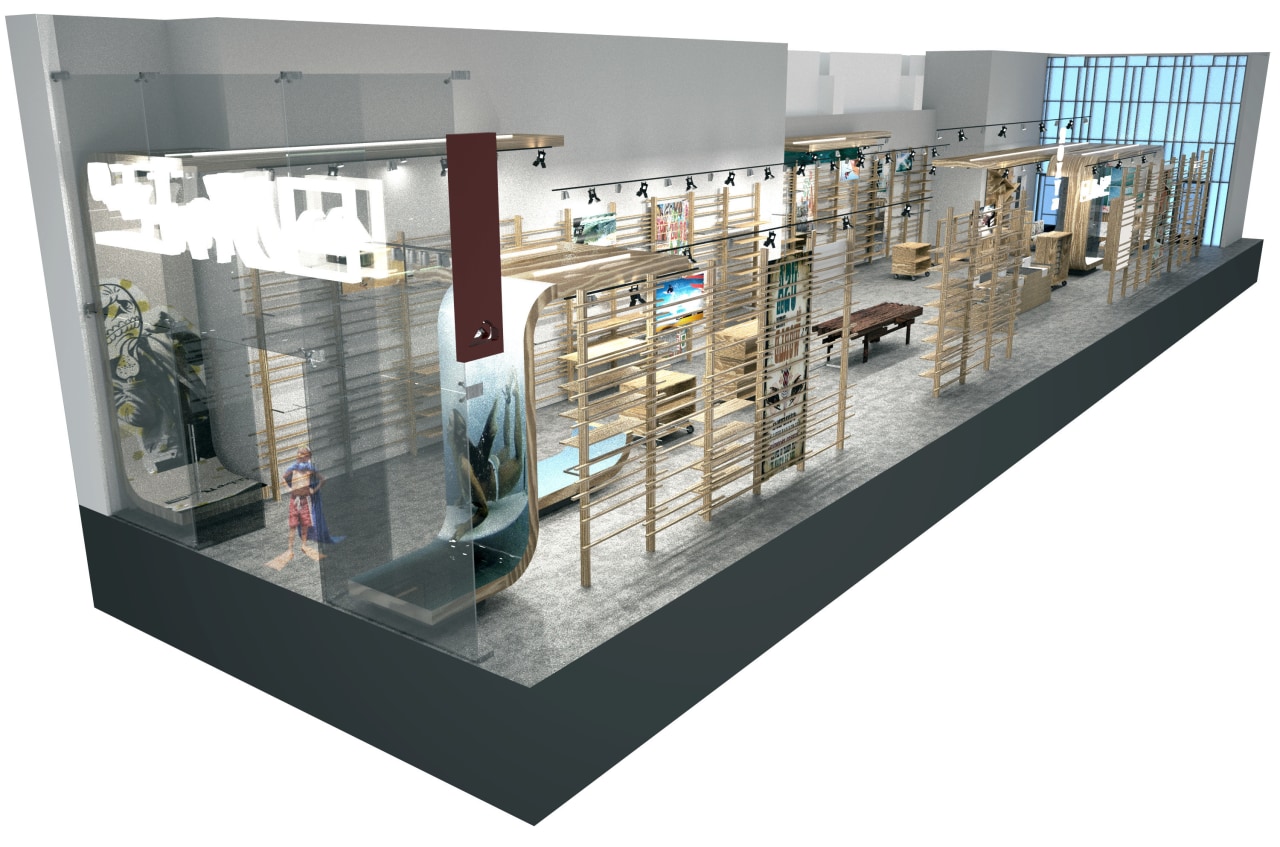Feel the vibe
A retail space bursting with merchandise demands a dynamic flow to attract young customers and keep their attention as they flex their credit cards

When young consumers go shopping they want a fun, exciting experience. Ensuring a brand provides such stimulation is a constant challenge.
Kanner Architects rose to the occasion when it designed the prototype store for sports clothing and accessories retailer Quiksilver. The space is packed with activity to appeal to a generation used to fast cutting and high-action graphics. Connections to surf, snow and skate sports and environments inform every aspect of the design concept, says Stephen Kanner, president of Kanner Architects.
Integral to the design are curved wooden components imitating outdoor elements such as waves and skateboard ramps. A dynamic blue palette calls to mind the ocean and the sky above snow-covered mountains.
"The rear of the store has a blue glow, as if you're seeing the ocean or the mountains in the distance. It is designed to draw young customers further into the store," Kanner says.
The ideas driving the design of the prototype are standardisation, adaptability and sustainability, says Kanner. Standardising Quiksilver stores with a single concept boosts brand recognition, as well as helping consumers know what to expect.
"Adaptability was also critical, because the concept must be replicated in stores of different sizes and shapes in numerous countries," he says.
Store managers can work with the concept and adapt it easily and inexpensively to their varied spaces. For example, the curved forms can be used any way the manager desires, and all wall fixtures fit a universal standard.
Sustainability is strongly emphasised in the design, to appeal to a younger demographic passionate about environmental issues.
"The store uses recycled materials to appeal to its target audience and because it is cost effective, too," Kanner says. "Recycled products are inexpensive."
Plywood, overstock clothing and even paper are incorporated into the model. A recycled paper product that is stronger than MDF is used for the top of the plywood cash desk. Overstock clothing is recycled into cushions used on the store furniture and in the dressing rooms. Haphazardly stuffed and covered with clear vinyl, the cushions underline the store's energy.
The storefront is intended as a diminishing element the aim is for customers to look through the glass at the front of the store to the blue glow at the very back.
"You can see in the facade that we've created an edge to frame the store you feel drawn through the space," Kanner says. "The storefront is a powerful image that brings you inside to see what's in the store."
The signage is pegged onto the glass, rather than on the facade, which is unusual, the architect says. Virtual environments created inside the glass vitrines highlight Quiksilver clothing and its women's line, Roxy.
Once inside the store, customers find themselves among swooping curved panels clad in Quiksilver graphics. Glimpses of sporting equipment and branding are placed in random, horizontal layers on the curved panels to emphasise vibrancy and energy.
"The panels convey the graphic quality in Quiksilver's clothing," Kanner says. "There's a lot of visual imagery, a lot of S curves, and a lot of sparkle in the store."
All this stimulus reaches its apex in the Vibe Zone, a place for customers to hang out at the back of the store. Bathed in a blue glow produced by concealed coloured lights, with a colourful ceiling lowered to create a more intimate space, and a huge flat-screen TV, the area feels different from the rest of the store. There's also a listening zone where customers can put on headphones and listen to music selections from top sports figures.
"The interaction with the Vibe Zone is a respite from intense shopping," the architect says.
Credit list
Architect
Graphic design
Cladding
Flooring
Paint
Bathroomware
Mechanical and electrical engineer
Furniture
Wallcoverings
Lighting design
Signage supplier
Story by: Lori Nims
Photography by: Jeffrey Kilmer
Home kitchen bathroom commercial design
Diving into nature
Classic looks, contemporary efficiency
Personality plus















